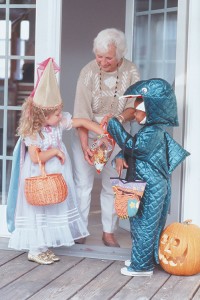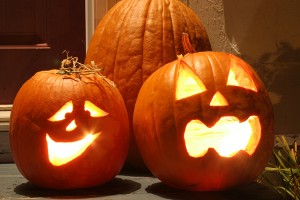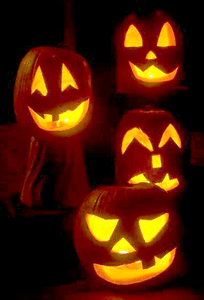Halloween: The History of Trick-or-Treating
Monday, October 23rd, 2023
Trick-or-treating is the main Halloween activity for children in the United States and Canada. Children dress in costumes and go door-to-door collecting candy and other treats.
Credit: © Ariel Skelley, Corbis Stock Market
Trick-or-treat! On October 31, children in the United States or Canada dress in costumes and go trick-or-treating to celebrate Halloween. If you live in an area where trick-or-treating is a practiced Halloween custom, you might have said these words thousands of times! Do you know what they mean? How did trick-or-treating become so popular?
Historically speaking, it should be treat-or-trick! The custom started as a way to honor and please spirits believed to be about on Halloween. It was once common for people to leave food out on a table as a treat for these spirits. In England, people went house-to-house souling—that is, asking for small breads called soul cakes in exchange for prayers. In some areas of the United Kingdom and Ireland, people went mumming (parading in masks) on many holidays, including Halloween. Groups of masked adults would go door-to-door asking for food and drink in return for a performance or song. Dressing in costume and asking for food or money was done in England on Guy Fawkes Day (November 5). So the treat started long ago, but when did the trick come into play?

On Halloween, many people decorate their homes with jack-o’-lanterns, hollowed-out pumpkins with a face cut into one side. A candle or other light illuminates the face from within, as seen in this photograph.
Credit: © V. J. Matthew, Shutterstock
Today, trick-or-treating is the main Halloween activity for children in the United States and Canada. Young people wear costumes and go from door to door saying “trick or treat!” Costumes range from simple homemade disguises to elaborate store-bought likenesses of characters from cartoons, motion pictures, and television. Costumes of ghosts, witches, devils, and other mysterious creatures are also popular. The neighbors, to avoid having tricks played on them, give the children candy and other treats. Children carry bags or plastic buckets to collect the candy. Trick-or-treating usually occurs late in the day or after dark on Halloween. Homeowners turn on their porch lights as a sign that treats are available.
Since 1950, some children have gone trick-or-treating for UNICEF, the United Nations Children’s Fund. They collect money for the agency in official orange-and-black cartons to aid children throughout the world.
Certain measures can help prevent accidents while trick-or-treating. A child can wear a light-colored costume or one with reflecting tape sewn on so they can be easily seen by drivers. The costume should be made of a material that does not burn easily. Because masks can block vision, many parents of small children use face makeup instead. Children should visit only homes in their own neighborhood. Younger trick-or-treaters should be accompanied by an adult. Have a safe Halloween!



